Grow habaneros in pots and unlock a world of fiery flavor right on your patio! Have you ever dreamed of adding a touch of intense heat to your dishes with peppers you’ve nurtured yourself? Well, dream no more! This DIY guide is your passport to cultivating these vibrant, scorching beauties, even if you’re short on space or lack a traditional garden.
The habanero, with its lantern-like shape and intense heat, has a rich history rooted in the Yucatan Peninsula of Mexico. For centuries, it’s been a staple in Mayan cuisine, adding a distinctive kick to everything from salsas to stews. Today, its popularity has exploded worldwide, making it a sought-after ingredient for adventurous cooks and spice enthusiasts alike.
But why should you bother growing your own? Simple! Store-bought habaneros can be expensive and sometimes lack the freshness and potency you crave. Plus, there’s something incredibly satisfying about harvesting peppers you’ve personally cared for, knowing exactly where they came from and how they were grown. With our easy-to-follow DIY tricks, you’ll learn how to grow habaneros in pots successfully, ensuring a steady supply of these fiery gems for all your culinary adventures. I’m excited to share these tips with you!
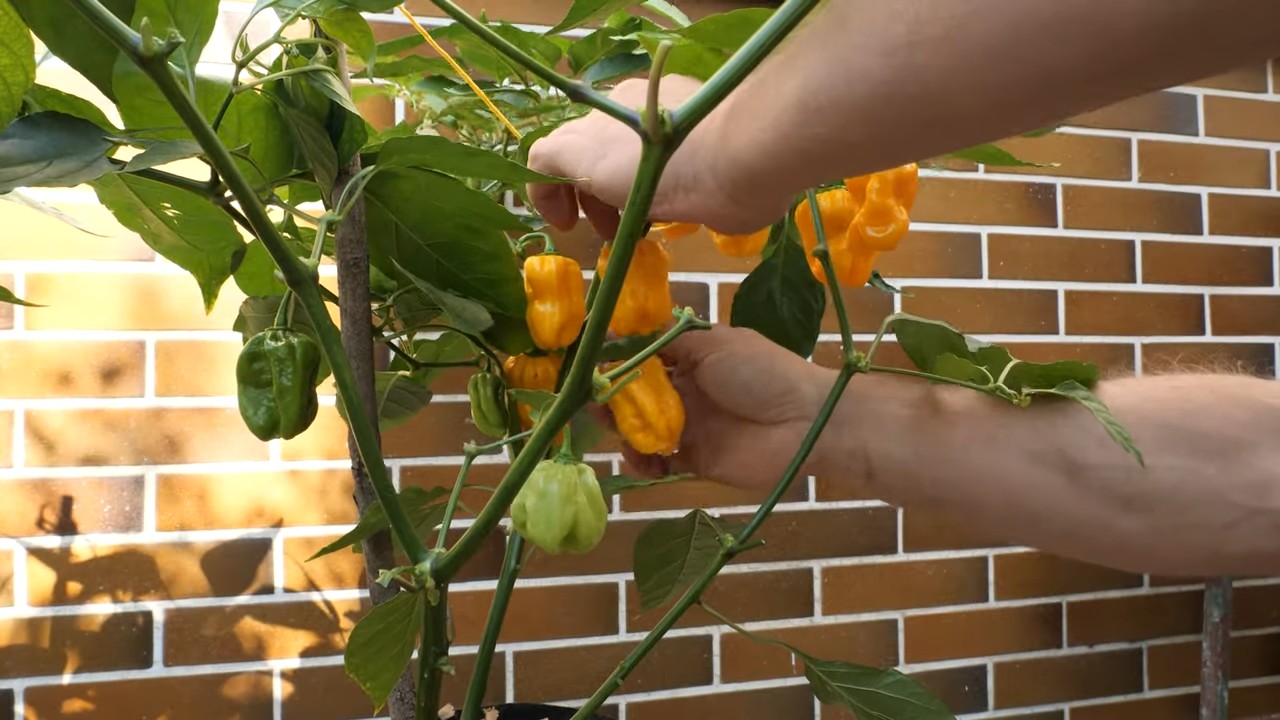
Growing Habaneros in Pots: A Fiery DIY Guide
Hey fellow chili enthusiasts! Ever dreamt of harvesting your own scorching hot habaneros right from your patio? Well, you’ve come to the right place! Growing habaneros in pots is totally doable, even if you don’t have a sprawling garden. I’m going to walk you through everything you need to know, from choosing the right pot to warding off pesky pests. Get ready to add some serious heat to your culinary creations!
What You’ll Need
Before we dive in, let’s gather our supplies. Here’s a checklist to make sure you’re all set:
* **Habanero Seeds or Seedlings:** You can start from seed (more rewarding, but takes longer) or buy established seedlings from a nursery (faster gratification!).
* **Pots:** Choose pots that are at least 5 gallons in size. Bigger is generally better, as it gives the roots more room to spread. Make sure they have drainage holes!
* **Potting Mix:** Don’t use garden soil! It’s too dense and won’t drain well. Opt for a high-quality potting mix specifically formulated for containers.
* **Fertilizer:** A balanced fertilizer (like 10-10-10) or one specifically for tomatoes and peppers will work wonders.
* **Watering Can or Hose:** For, well, watering!
* **Sunlight:** Habaneros crave sunshine, so a sunny spot is crucial.
* **Optional: Grow Lights:** If you’re starting seeds indoors or live in a less sunny climate, grow lights can be a lifesaver.
* **Optional: Plant Markers:** To keep track of your different chili varieties (if you’re growing more than one!).
* **Optional: Gardening Gloves:** To protect your hands.
* **Optional: Insecticidal Soap or Neem Oil:** For dealing with pests (we’ll get to that later).
Starting from Seed (The Patient Gardener’s Route)
Starting from seed is a bit more involved, but it’s incredibly satisfying to watch your little habaneros sprout from tiny specks.
1. **Timing is Key:** Habaneros have a long growing season, so you’ll want to start your seeds indoors about 8-10 weeks before the last expected frost. This gives them a head start.
2. **Seed Starting Mix:** Use a seed starting mix, which is lighter and finer than regular potting mix. This helps the delicate seedlings emerge easily.
3. **Planting the Seeds:** Fill your seed starting trays or small pots with the seed starting mix. Moisten the mix thoroughly. Plant the seeds about 1/4 inch deep. I usually plant 2-3 seeds per cell or pot, just in case some don’t germinate.
4. **Warmth and Humidity:** Habanero seeds need warmth to germinate. Aim for a soil temperature of 80-85掳F (27-29掳C). You can use a heat mat to achieve this. Cover the trays or pots with a humidity dome or plastic wrap to create a humid environment.
5. **Light:** Once the seeds germinate (usually in 1-3 weeks), remove the humidity dome and provide plenty of light. If you don’t have a sunny windowsill, use grow lights. Keep the lights on for about 14-16 hours a day.
6. **Watering:** Keep the soil consistently moist, but not soggy. Water from the bottom to avoid damping off (a fungal disease that can kill seedlings).
7. **Thinning:** Once the seedlings have a few sets of true leaves (the leaves that look like miniature versions of the adult plant’s leaves), thin them out, leaving only the strongest seedling in each cell or pot.
8. **Hardening Off:** Before transplanting the seedlings outdoors, you need to “harden them off.” This means gradually exposing them to outdoor conditions over a period of 1-2 weeks. Start by placing them in a sheltered spot outdoors for a few hours each day, gradually increasing the amount of time they spend outside. This helps them acclimate to the sun, wind, and temperature changes.
Transplanting Seedlings or Planting Store-Bought Seedlings
Whether you started from seed or bought seedlings, this step is crucial for getting your habaneros off to a good start.
1. **Choosing the Right Pot:** As mentioned earlier, choose a pot that’s at least 5 gallons in size. Make sure it has drainage holes!
2. **Preparing the Pot:** Fill the pot with high-quality potting mix, leaving a few inches of space at the top.
3. **Transplanting:** Gently remove the seedling from its container. If it’s root-bound (the roots are tightly circling the pot), gently loosen them before planting. Dig a hole in the potting mix that’s large enough to accommodate the root ball. Place the seedling in the hole and backfill with potting mix.
4. **Watering:** Water the newly transplanted seedling thoroughly.
5. **Staking (Optional):** Habanero plants can get quite tall and bushy, so you might want to stake them to provide support. This is especially helpful if you live in a windy area.
Caring for Your Habanero Plants
Now that your habaneros are planted, it’s time to give them the TLC they need to thrive.
1. **Sunlight:** Habaneros need at least 6-8 hours of sunlight per day. Place your pots in a sunny spot where they’ll get plenty of direct sunlight.
2. **Watering:** Water your habanero plants regularly, especially during hot, dry weather. The soil should be consistently moist, but not soggy. Check the soil moisture by sticking your finger into the soil. If the top inch feels dry, it’s time to water.
3. **Fertilizing:** Feed your habanero plants every 2-3 weeks with a balanced fertilizer or one specifically for tomatoes and peppers. Follow the instructions on the fertilizer package.
4. **Pruning (Optional):** Pruning can help encourage bushier growth and more fruit production. You can pinch off the tips of the branches to encourage side growth.
5. **Pest Control:** Keep an eye out for pests like aphids, spider mites, and whiteflies. If you spot any pests, treat them with insecticidal soap or neem oil. Follow the instructions on the product label.
6. **Temperature:** Habaneros thrive in warm temperatures. They can tolerate temperatures as low as 50掳F (10掳C), but they prefer temperatures between 70-85掳F (21-29掳C). If you live in an area with cool nights, you might want to bring your pots indoors or cover them with a blanket to protect them from the cold.
7. **Pollination:** While habaneros are self-pollinating, you can help them out by gently shaking the plants or using a small brush to transfer pollen from one flower to another. This is especially helpful if you’re growing them indoors.
Harvesting Your Habaneros
The moment you’ve been waiting for! Harvesting your own fiery habaneros is incredibly rewarding.
1. **Timing:** Habaneros are typically ready to harvest about 80-100 days after transplanting. The peppers will turn from green to orange or red when they’re ripe.
2. **Harvesting:** Use scissors or pruning shears to cut the peppers from the plant. Be careful not to damage the plant.
3. **Handling:** Wear gloves when handling habaneros, as the capsaicin (the compound that makes them hot) can irritate your skin.
4. **Storage:** Store your habaneros in a cool, dry place. You can also freeze them or dry them for later use.
Troubleshooting Common Problems
Even with the best care, you might encounter some problems along the way. Here are a few common issues and how to deal with them:
* **Yellowing Leaves:** This can be caused by overwatering, underwatering, nutrient deficiencies, or pests. Check the soil moisture and adjust your watering accordingly. Fertilize your plants regularly. Inspect them for pests and treat them as needed.
* **Blossom Drop:** This is when the flowers fall off the plant without producing fruit. It can be caused by temperature stress, lack of pollination, or nutrient deficiencies. Make sure your plants are getting enough sunlight and water. Hand-pollinate the flowers if necessary. Fertilize your plants regularly.
* **Pest Infestations:** As mentioned earlier, keep an eye out for pests like aphids, spider mites, and whiteflies. Treat them with insecticidal soap or neem oil.
* **Lack of Fruit Production:** This can be caused by a variety of factors, including lack of sunlight, poor pollination, nutrient deficiencies, or temperature stress. Make sure your plants are getting enough sunlight and water. Hand-pollinate the flowers if necessary. Fertilize your plants regularly.
Extra Tips for Super Hot Success
* Choose the Right Variety: There are different varieties of habaneros, some hotter than others
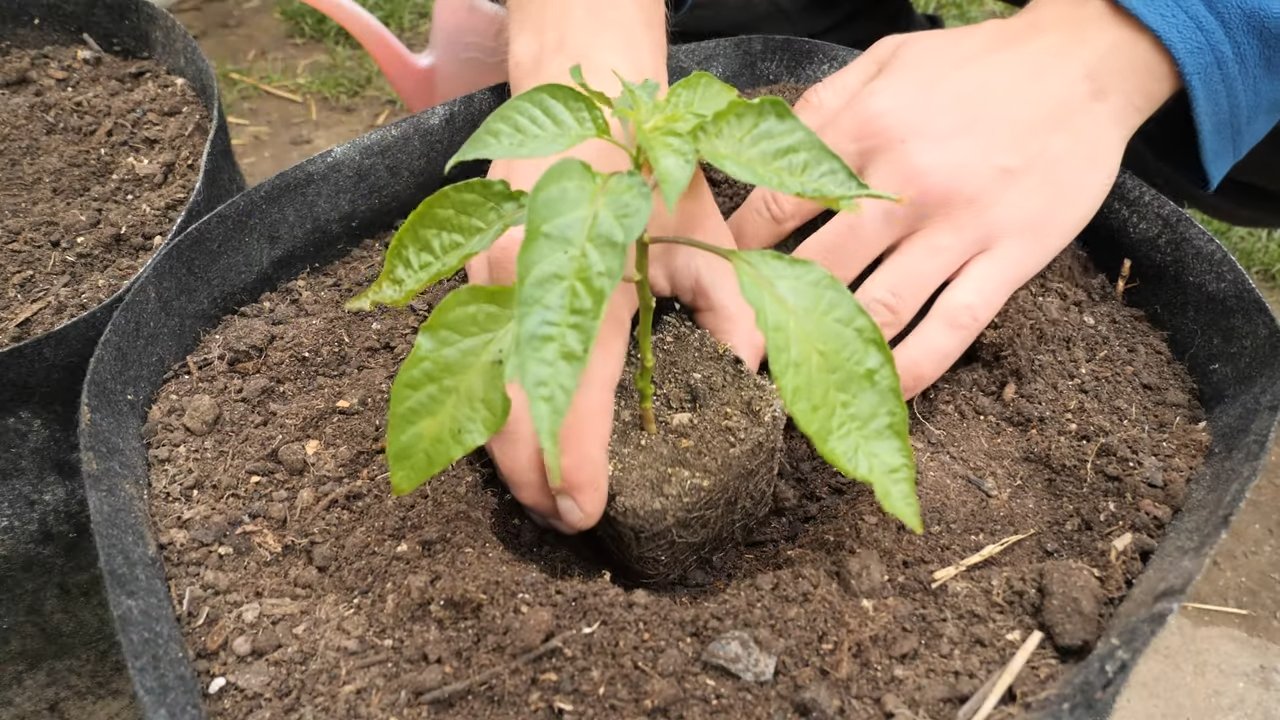
Conclusion
So, there you have it! Growing habaneros in pots isn’t just a gardening trend; it’s a gateway to fresh, fiery flavor right at your fingertips. We’ve walked through the essential steps, from selecting the perfect pot and soil to nurturing your plants and harvesting those potent peppers. But why should you take the plunge and try this DIY project?
First and foremost, growing your own habaneros gives you unparalleled control over the quality and freshness of your peppers. No more relying on store-bought options that may have been sitting on shelves for weeks, losing their vibrancy and heat. Imagine the satisfaction of plucking a perfectly ripe habanero from your own plant, knowing exactly where it came from and how it was grown.
Beyond freshness, growing habaneros in pots offers incredible convenience. Whether you have a sprawling garden or a small balcony, container gardening allows you to cultivate these spicy gems in even the most limited spaces. This makes it accessible to anyone, regardless of their living situation. Plus, the portability of pots means you can easily move your plants to optimize sunlight exposure or protect them from harsh weather conditions.
But the benefits don’t stop there. Growing your own habaneros is also a sustainable and cost-effective way to add some heat to your life. You’ll reduce your reliance on commercially grown peppers, which often involve pesticides and long-distance transportation. And over time, you’ll save money by avoiding frequent trips to the grocery store for those pricey habaneros.
Ready to take your habanero growing to the next level? Consider experimenting with different varieties of habaneros, such as the chocolate habanero for a smoky flavor or the Scotch bonnet for a fruity twist. You can also try companion planting, pairing your habaneros with herbs like basil or oregano to deter pests and enhance their growth. Another variation is to experiment with different potting mixes. While we recommended a well-draining mix, you could try adding more perlite or vermiculite to improve drainage further, or incorporating compost for added nutrients.
Don’t be afraid to experiment and find what works best for you and your growing environment.
Ultimately, growing habaneros in pots is a rewarding and enjoyable experience that connects you with nature and provides you with a delicious and versatile ingredient. It’s a chance to learn new skills, nurture living things, and add a touch of spice to your culinary creations.
We encourage you to give this DIY trick a try and experience the joy of growing your own habaneros. Whether you’re a seasoned gardener or a complete beginner, we’re confident that you can successfully cultivate these fiery peppers with a little patience and care.
And once you’ve harvested your first batch of habaneros, we’d love to hear about your experience! Share your tips, tricks, and favorite recipes in the comments below. Let’s create a community of habanero enthusiasts and inspire others to embark on this exciting gardening adventure. So, grab your pots, soil, and seeds, and get ready to grow some serious heat!
Frequently Asked Questions (FAQ)
What is the best size pot for growing habaneros?
A pot that is at least 5 gallons in size is recommended for growing habaneros. This provides enough space for the roots to develop and allows the plant to grow to its full potential. Larger pots, such as 7 or 10 gallons, are even better, as they provide more room for growth and help retain moisture. The exact size will depend on the specific variety of habanero you are growing, as some varieties tend to be larger than others. Ensure the pot has adequate drainage holes to prevent waterlogging, which can lead to root rot.
How often should I water my habanero plants in pots?
Watering frequency depends on several factors, including the size of the pot, the type of soil, the weather conditions, and the stage of growth of the plant. As a general rule, water your habanero plants when the top inch of soil feels dry to the touch. During hot and dry weather, you may need to water them daily, while during cooler or rainy periods, you may only need to water them every few days. Avoid overwatering, as this can lead to root rot. When you water, water deeply, ensuring that the water drains out of the drainage holes.
What kind of soil is best for growing habaneros in pots?
Habaneros thrive in well-draining soil that is rich in organic matter. A good potting mix for habaneros should consist of a combination of peat moss, perlite, and vermiculite. You can also add compost or aged manure to the mix to provide additional nutrients. Avoid using garden soil, as it can be too heavy and may not drain well. A slightly acidic to neutral pH (around 6.0 to 7.0) is ideal for habaneros. You can test the pH of your soil using a soil testing kit and amend it if necessary.
How much sunlight do habanero plants need?
Habanero plants need at least 6-8 hours of direct sunlight per day to thrive. Choose a location for your pots that receives plenty of sunlight throughout the day. If you live in a hot climate, you may need to provide some afternoon shade to prevent the plants from getting scorched. If you are growing your habaneros indoors, you will need to supplement with artificial lighting, such as grow lights.
What kind of fertilizer should I use for habanero plants?
Habanero plants benefit from regular fertilization, especially during the growing season. Use a balanced fertilizer with an NPK ratio of 10-10-10 or 14-14-14. You can also use a fertilizer specifically formulated for peppers or tomatoes. Fertilize your plants every 2-3 weeks, following the instructions on the fertilizer label. Avoid over-fertilizing, as this can lead to excessive foliage growth and reduced pepper production. You can also supplement with organic fertilizers, such as compost tea or fish emulsion.
How do I protect my habanero plants from pests and diseases?
Regularly inspect your habanero plants for signs of pests and diseases. Common pests that affect habaneros include aphids, spider mites, and whiteflies. You can control these pests with insecticidal soap, neem oil, or by introducing beneficial insects, such as ladybugs. Common diseases that affect habaneros include fungal diseases like powdery mildew and blossom end rot. Prevent fungal diseases by providing good air circulation, avoiding overwatering, and using a fungicide if necessary. Blossom end rot is caused by a calcium deficiency and can be prevented by adding calcium to the soil or using a calcium-rich fertilizer.
When should I harvest my habaneros?
Habaneros are typically ready to harvest about 80-100 days after transplanting. The peppers will change color from green to orange, red, or yellow, depending on the variety. The peppers should be firm and slightly glossy. Use pruning shears or scissors to cut the peppers from the plant, leaving a small stem attached. Wear gloves when handling habaneros, as the capsaicin oil can irritate your skin.
Can I overwinter my habanero plants in pots?
Yes, you can overwinter your habanero plants in pots to keep them alive for the next growing season. Before the first frost, bring your plants indoors and place them in a sunny location. Reduce watering and fertilization during the winter months. You may need to prune the plants back to encourage new growth in the spring. In the spring, gradually acclimate your plants to outdoor conditions before transplanting them back into their pots.
How hot are habaneros?
Habaneros are known for their intense heat. They typically range from 100,000 to 350,000 Scoville heat units (SHU) on the Scoville scale, which measures the pungency (spiciness or “heat”) of chili peppers. This makes them significantly hotter than jalape帽os, which typically range from 2,500 to 8,000 SHU. Handle habaneros with care and use them sparingly in your cooking. Always wear gloves when handling them to avoid skin irritation.

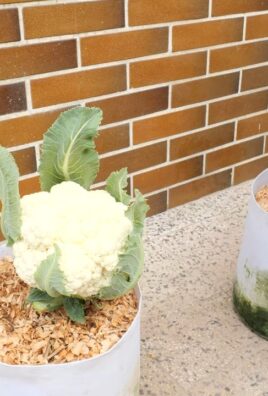
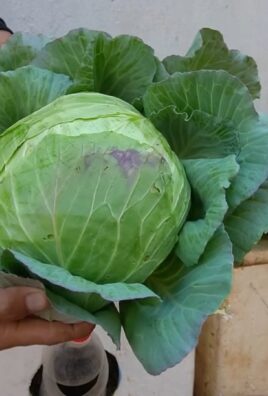
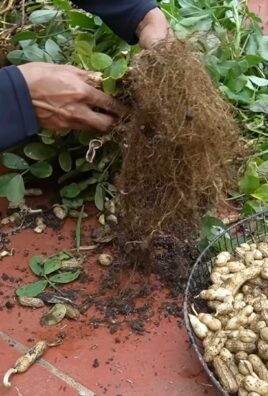
Leave a Comment